For Russians, kolbasa — the word for any kind of ground meat product, from cold cuts to breakfast sausage to the kind of sausage you throw on the grill — is an iconic and even sacred dish.
It’s no longer a secret that a half-century ago it defined everything for Russians: social status, leisure activities and even knowledge of the geography of neighboring regions.
At a recent conference on culinary tourism, my colleagues and I even joked that this kind of tourism is nothing new — in fact, it was very popular in the USSR. We just didn’t know that “sausage” trains that ran between Moscow and the neighboring regions could be called “culinary tourism.”
What were “sausage trains”? In the Soviet period when the stores in Moscow had food and goods not to be found outside the city, residents from the surrounding regions — almost always women — would take the local electric trains into Moscow in the morning. They’d stand for hours in lines at various shops, and then, weighed down with bags of food, take the “sausage train” back to their homes in Kaluga or Ryazan.
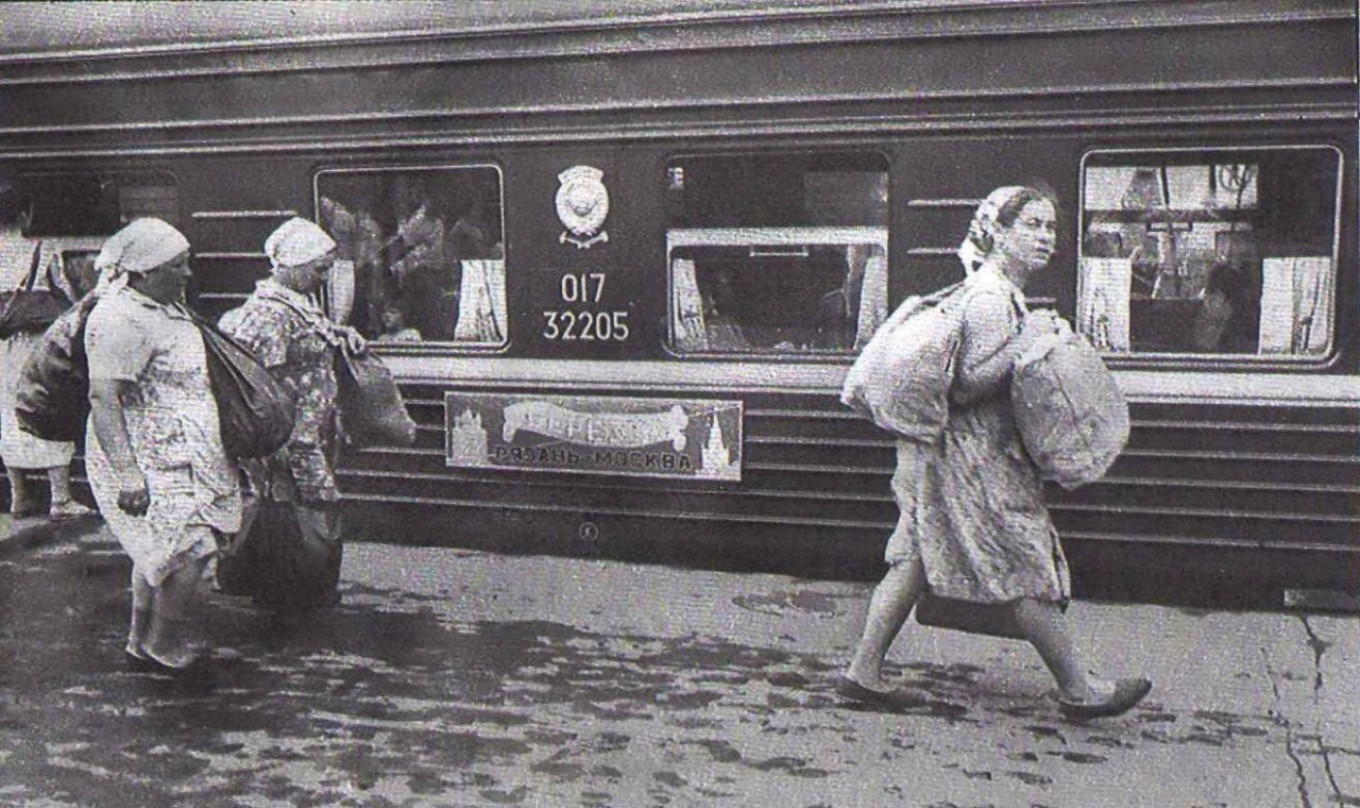
In all seriousness, our ancestors have been making and eating kolbasa since ancient times. It was an early version of canned food. Really! The main and in fact only task of of kolbasa recipes was to preserve meat in the absence of refrigerators. Of course, it wasn’t effective in really hot weather. But in the autumn when pigs were slaughtered, it was the best time to make and keep kolbasa.
Kolbasa was not made from the choicest pieces of pork, and so it was richly seasoned with pepper and garlic. But it was delicious and served on every table, from peasant to boyar. The “Domostroi” (1550s) included a section “On the Great Meat-Eating Day After Christmas” advising to “serve goose giblets, dried beef as well as pork, ham, and various kinds of kolbasa.” It wasn’t cheap, so the poor folk only ate kolbasa on major holidays.
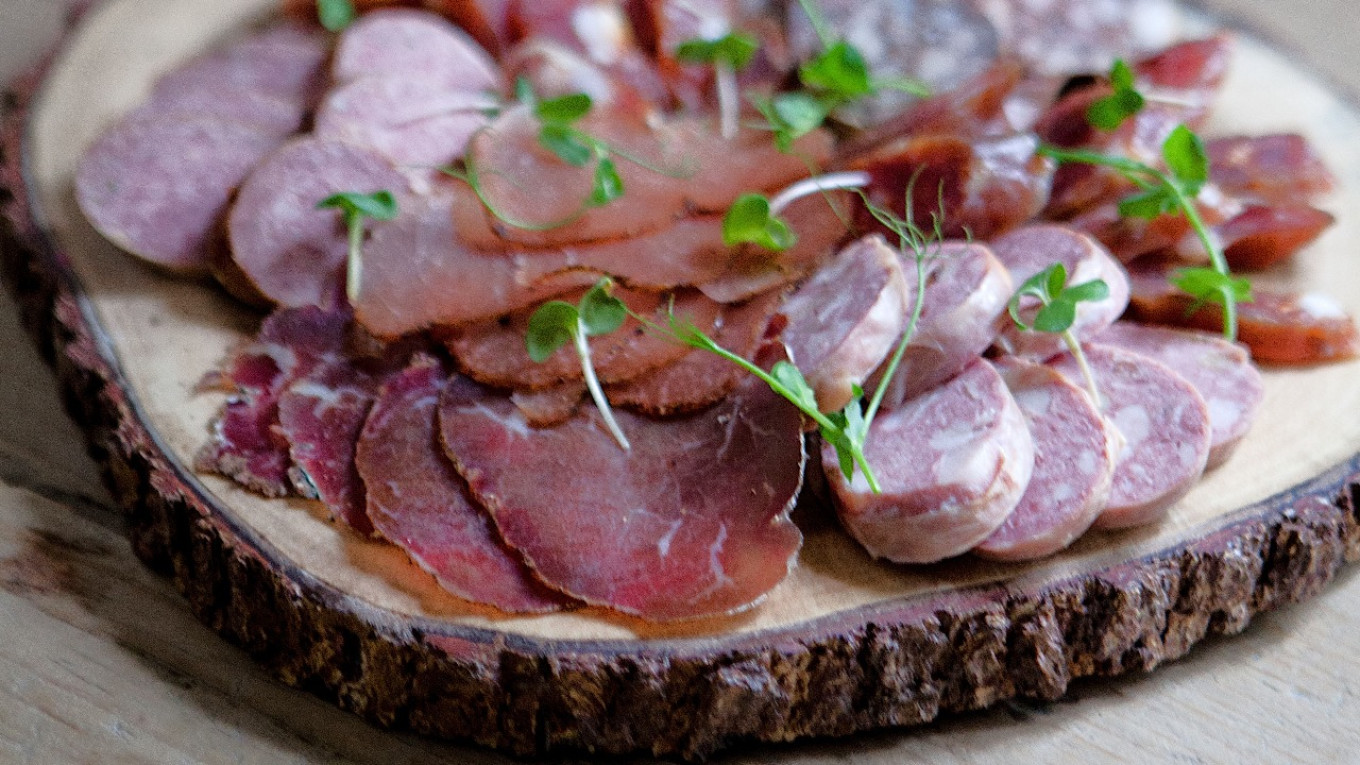
Everything changed when the urban population grew. By the end of the 19th century kolbasa and sausage became the favorite dish of the poor. In 1893 the magazine “Our Food” wrote that domestic sausage producers make their sales “by the variety and cheap price of their products. A German sausage maker would never make cheap boiled kolbasa with garlic for the common people, but Russians have enormous special workshops that produce 20 to 30 poods (about 722-1,083 pounds) of boiled kolbasa a day.”
Each sausage workshop had its own sales area. Contemporaries describe scenes when workers carried boiled kolbasa covered with cattle rugs two by two to the shops. One of them carried the kolbasa to a shop in a leather valise over his shoulder while the other stood near the sled outside to guard the rest of the kolbasa from pesky dogs attracted by the delicious scent.
The cheapest sausage was boiled liver sausage for the common folk. It was sold for 10 kopeks a pound. There was also “tea sausage” (also boiled) at 20 kopeks a pound. The most expensive sausage was Lubeck (natural smoked pork) at 60 kopeks a pound and salami, also 60 kopeks a pound. Workshops produced Spanish sausage made from tongue, Italian, Braunschweig and “Little Russian” kolbasa at 40 kopeks each, Swedish at 35 kopeks, Polish and Moscow sausage at 30 kopeks.
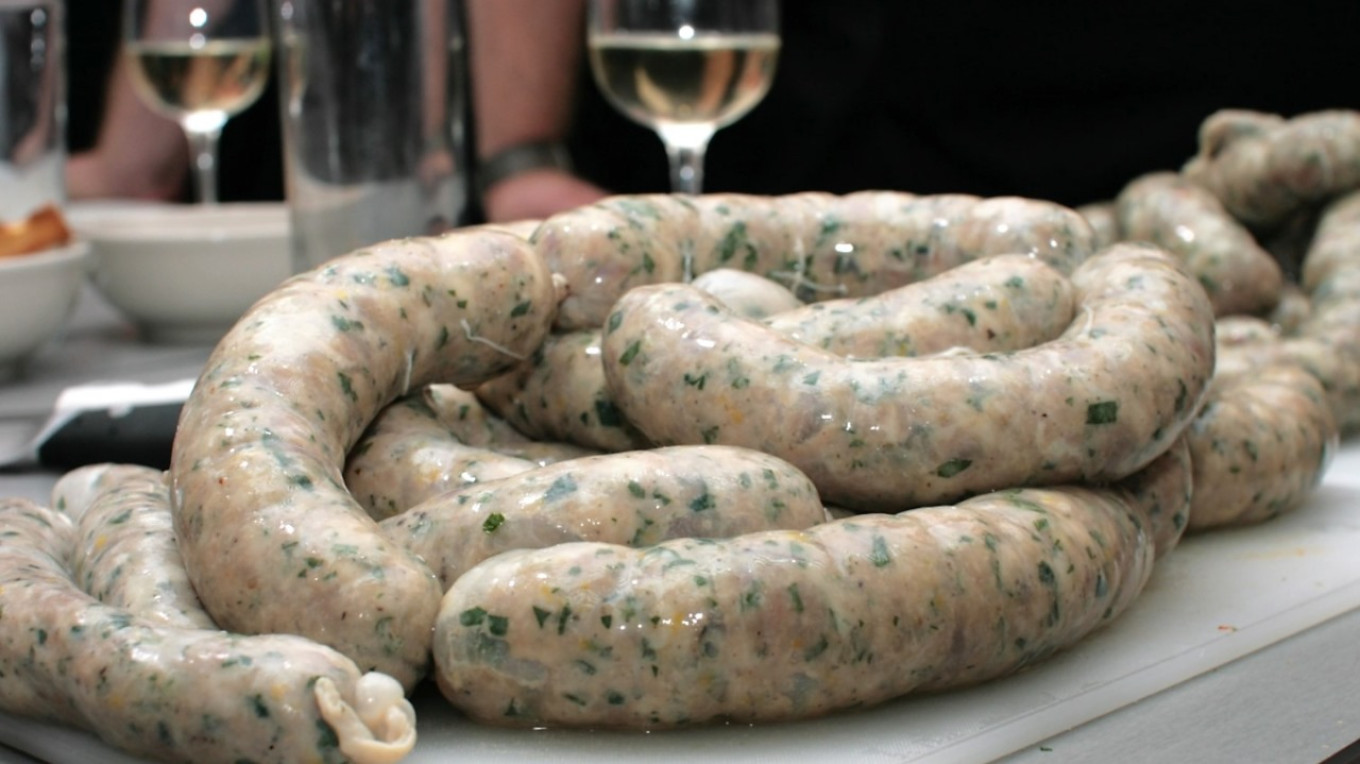
But soon these blessed times were called the era of “pre-historical materialism.” The Russian Revolution of 1917 changed everything, including attitudes toward sausage. Of course, things didn’t change immediately. You might remember Mikhail Bulgakov’s novel “Heart of a Dog” that takes place in the first years of Soviet power. The hero Sharikov muttered to himself “…why on earth would you want Special Krakow sausage? Why would you want to eat a rotten horse? The one thing you can count on with Mosselprom sausages is that you’ll get food poisoning.”
During the first Five Year Plan it was unprofitable to produce pure meat kolbasa and sausage, but the young Soviet country needed to be fed. Quality fell, but sausage became affordable to the masses. All the same, people were suspicious of factory-made sausages for a long time.
But 10 years later, the “Soviet miracle” appeared: “Doctor’s kolbasa.” Produced at the Mikoyan food plant, it became an example of quality and the benchmark for our entire food industry. Poets and playwrights dedicated odes to it, and during the “era of stagnation” — the late Soviet period —Muscovites spent hours waiting in line to buy it. It was the most popular meat product, and so it will probably remain.
The recipe consisted of what were high-quality products in that era: 25% beef, 70% pork, 3% egg or egg melange and 2% milk (powder). The factory even came up with an advertising slogan for it: “For the sick whose health was damaged during the Civil War and tsarist despotism.” So not only did they make the product, they came up with a legend to sell it.
But as Bismarck said, he who loves sausage and politics should not see them being made. The German chancellor was certainly right about the USSR. As Soviet politics degraded, the quality of sausage also fell. The people’s dream of 50 varieties of sausage and vague rumors that top Communist Party officials were getting their doctor’s kolbasa from a “special distribution center” contributed to the collapse of the Soviet project.
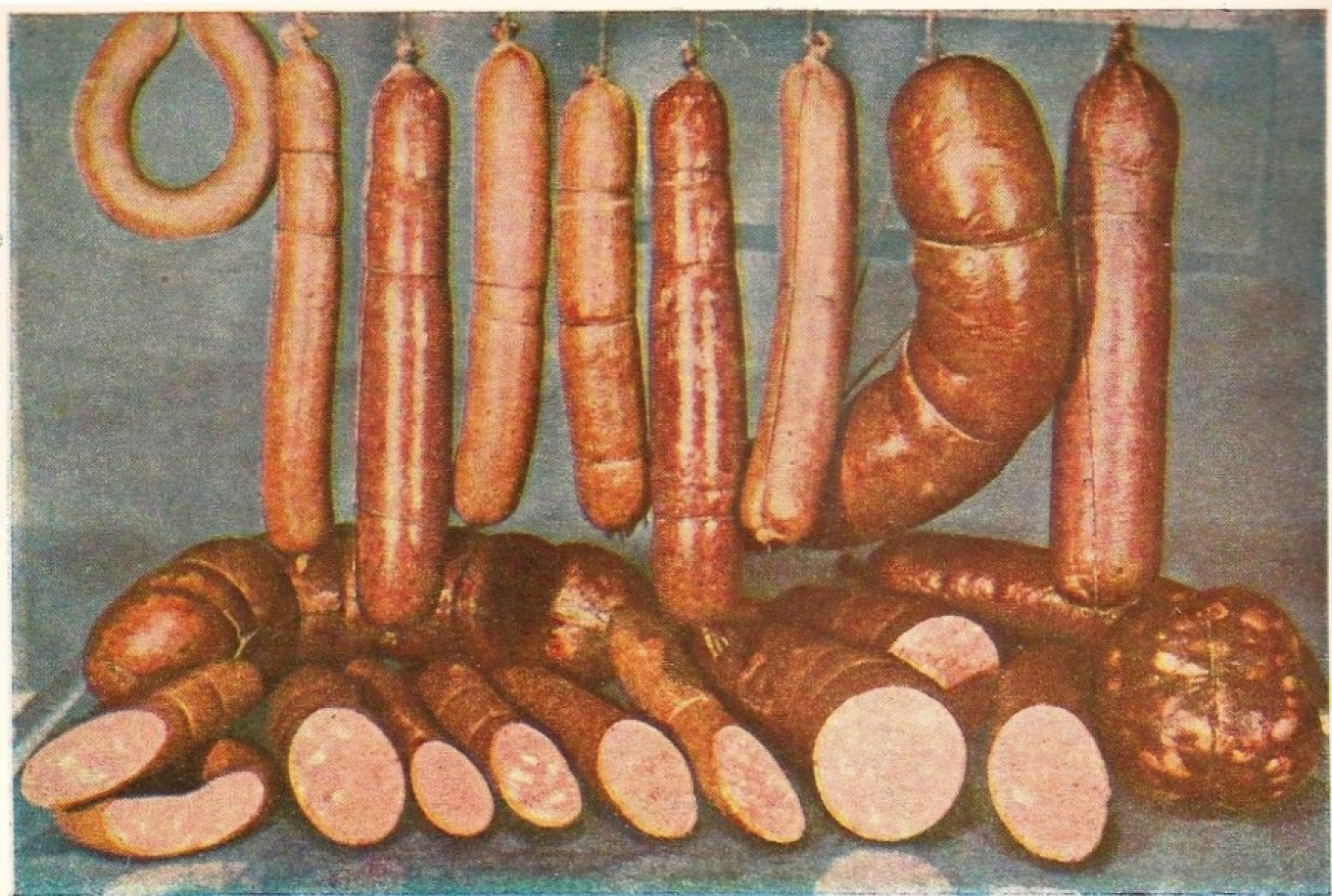
In the 1990s, kolbasa was one of the most popular and widespread foods. There truly were many varieties and brands for every taste and pocketbook. But many years would go by before citizens could get their fill of it. And for many more years they would put plates of kolbasa on holiday tables as a sign of tradition and prosperity. By then the younger generation would smirk at this “treat,” since in their childhood kolbasa was considered a cheap and unhealthy food.
But fate is playing its usual joke on us once more, and kolbasa is changing again. Good quality kolbasa is no longer affordable to many millions of Russians who are counting their money until payday. For them, “Putin’s abundance” turns out to be the cheapest varieties of kolbasa where the content of good-quality meat is heading to zero.

The way things are going slices of kolbasa are likely to become a “holiday treat” in Russia once more. Actually, that would be natural. Now that the country has decided to return to the USSR, loyal Russians get all of Soviet life in a package: unchangeable government, battle with dissidents, controlled mass media… naturally that should include kolbasa only on holidays.
But we will depart from the Soviet standard and offer you a light and elegant summer dish. When the season of plums arrives, we make it for dinner. It is quick, tasty and makes a great impression.
Warm Plum and Dry-Cured Ham Salad
Ingredients
- 1 bunch rucola
- 250 g (9 oz) thin slices of dry-cured ham
- 8 large plums
- fresh thyme leaves
- 2 Tbsp olive oil
- 2 Tbsp white dry wine
- 1 Tbsp balsamic vinegar
- salt, freshly ground black pepper.
Instructions
- Cut the plums carefully in half and remove the pits.
- Put the plum halves in a bowl, sprinkle with a little salt, pepper and thyme.
- Heat the olive oil in a skillet over medium heat and place the plums cut side down.
- Lightly shake the skillet and sauté the plums for about 3-4 minutes so they produce juice but still keep their shape.
- Pour in the wine and balsamic vinegar and cook for 2-3 minutes until thickened.
- Arrange the rucola, ham, and warm plum halves on a flat dish. Just before serving, drizzle with the sauce from the skillet.
Note: Don’t pour the sauce over the salad in advance — rucola is very delicate and quickly loses its freshness from any dressing.
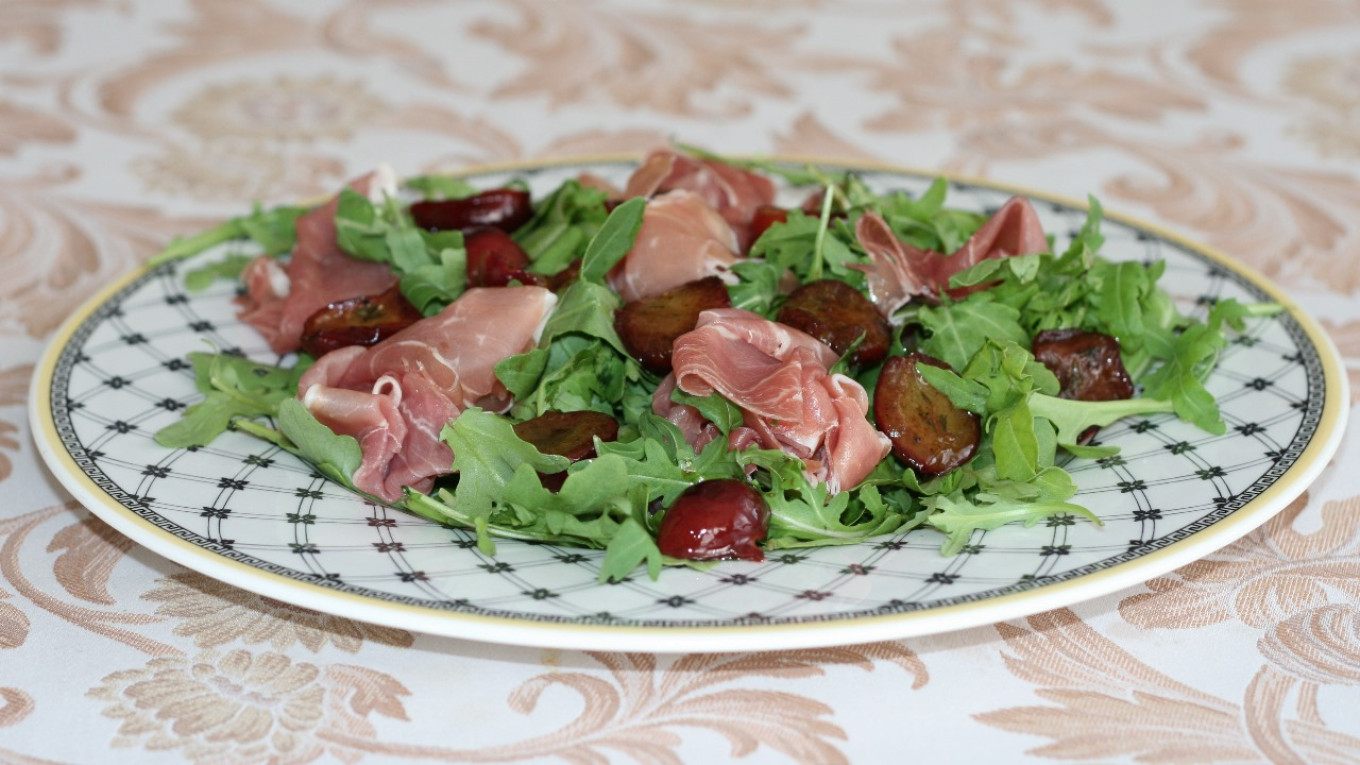
… we have a small favor to ask. As you may have heard, The Moscow Times, an independent news source for over 30 years, has been unjustly branded as a “foreign agent” by the Russian government. This blatant attempt to silence our voice is a direct assault on the integrity of journalism and the values we hold dear.
We, the journalists of The Moscow Times, refuse to be silenced. Our commitment to providing accurate and unbiased reporting on Russia remains unshaken. But we need your help to continue our critical mission.
Your support, no matter how small, makes a world of difference. If you can, please support us monthly starting from just $2. It’s quick to set up, and you can be confident that you’re making a significant impact every month by supporting open, independent journalism. Thank you.
Once
Monthly
Annual
Continue

Not ready to support today?
Remind me later.
×
Remind me next month
Thank you! Your reminder is set.






